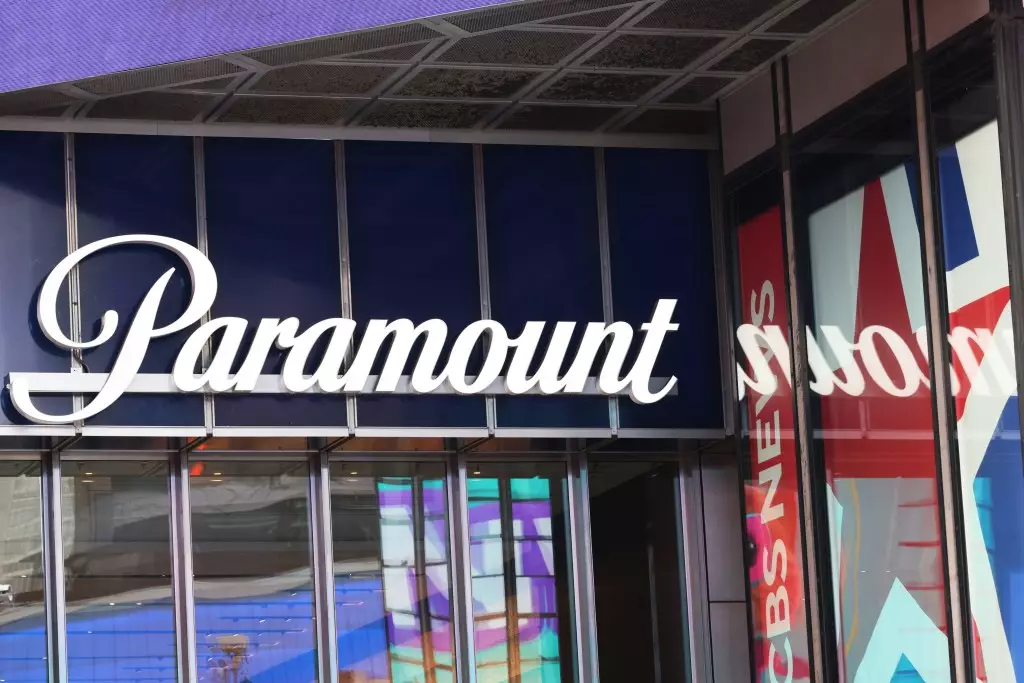Paramount Global, a titan in the media landscape, has set July 2 as the date for its much-anticipated annual shareholder meeting. This announcement isn’t just a routine update; it serves as a critical benchmark that hints at the uncertain trajectory of the long-delayed merger with Skydance Media. In their regulatory filings, Paramount has reiterated its commitment to closing the $8 billion deal in the first half of 2025, a timeline that concludes as the summer ends. However, the complexities surrounding this merger have painted a picture of rising challenges rather than straightforward resolutions.
Unique to Paramount is its structure as a “controlled” company; the ownership largely lies with Non-Executive Chairwoman Shari Redstone and her family. Because of this setup, the merger is not contingent upon a shareholder vote. This enables the Redstone family’s influence over decision-making and strategies within the company, underscoring both its advantages and potential pitfalls. Paramount’s updated proxy filing has laid out additional details regarding the shareholder meeting, which will take place virtually at 9 a.m. ET, allowing flexibility for attendance but raising questions about the engagement level of attendees.
Board Reconfiguration: New Blood, Old Challenges
At this upcoming meeting, shareholders will have the opportunity to vote on the addition of three new members to the board of directors—Attorney Mary Boies, former judge Roanne Sragow Licht, and venture capitalist Charles Ryan. This initiative aims to rejuvenate the company’s governance after a period of board shrinkage that saw it dwindle to just four members last year. With well-established figures like Shari Redstone and Barbara Byrne still on board, the addition of fresh talents could inject necessary vigor into the company’s decision-making processes.
However, the transition to a seven-member board contrasts sharply with the more consolidated structure of the previous year. Observers must contemplate whether this restructuring is a strategic means to navigate a merger fraught with hurdles or merely a superficial effort in the face of external pressures. It seems paramount that any new directors are not only equipped with individual expertise but also possess the appetite for diving into the turbulent waters surrounding both Paramount and the broader media sector.
The FCC Hurdle and Political Intrigues
The seemingly simple task of finalizing the merger with Skydance is obstructed by a plethora of unexpected challenges. The principal roadblock remains the approval from the Federal Communications Commission (FCC), which has become mired in political animosities, notably stemming from former President Donald Trump’s feud with CBS. Trump’s lawsuit over the media giant’s coverage adds a layer of complexity that stifles the regulatory process. Under the leadership of FCC Chair Brendan Carr, a Trump appointee, such entanglements signal that the agency’s review mechanism may not function independently, as both Trump and prominent figures within Paramount are believed to have significant political ties.
Despite the precarious situation, observers note an irony; the perception that Paramount and Skydance’s merger would forge a stronger entity in a less-regulated media environment has been stymied by personal grievances. Trump’s antagonism toward CBS could very well influence his allies’ actions within the FCC, complicating the merger’s evaluation. This paradox sits at the confluence of business strategy and political theater, demonstrating how political dynamics can ripple through corporate landscapes in unforeseen ways.
Celebrating Resilience Amidst Distractions
In an enlightened letter to shareholders, Co-CEOs George Cheeks, Chris McCarthy, and Brian Robbins penned a statement acknowledging the trials faced throughout the year. They affirm that even when beset by distractions and challenges both in the macroeconomic environment and their industry, 2024 was a “transformative” year for Paramount. This optimistic outlook is not merely a corporate platitude; it reflects a robust internal belief in the company’s adaptability and resilience.
Paramount’s ability to navigate these multifaceted challenges while still focusing on innovation and strategic growth speaks volumes about its potential for resurgence. Rather than fixating solely on the hurdles presented by the Skydance merger, the company seems dedicated to carving a path that prioritizes long-term success, urging shareholders to trust in a vision that transcends the immediate obstacles at hand. The intersection of ambition and reality illustrates that navigating the media business landscape is not merely about overcoming current challenges but also about envisioning a future that values transformation as an integral avenue to success.

